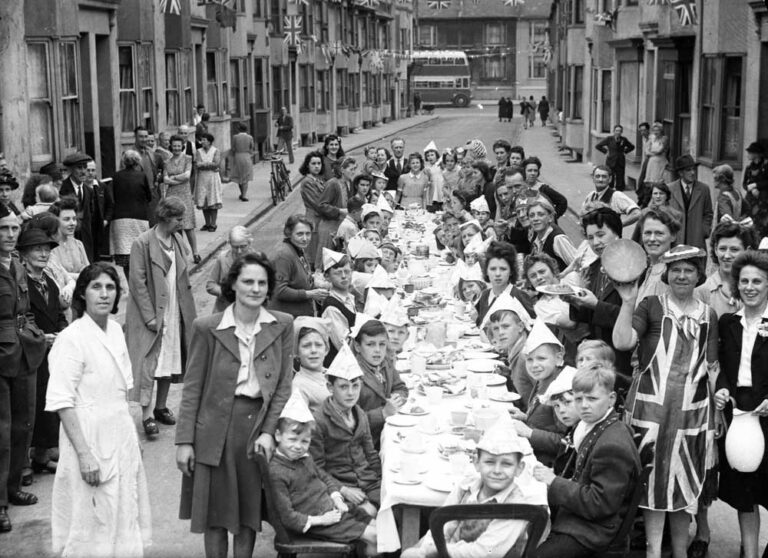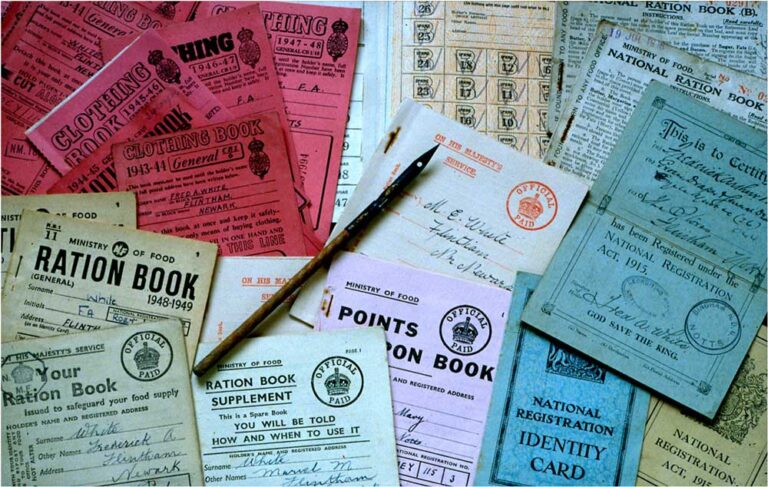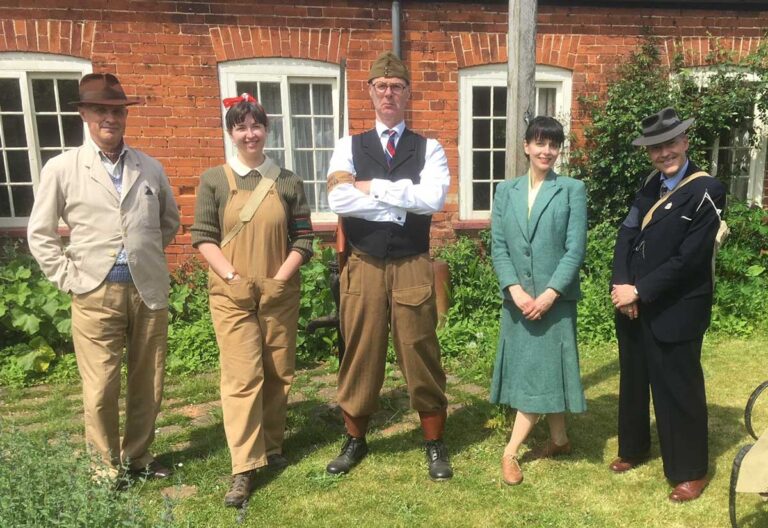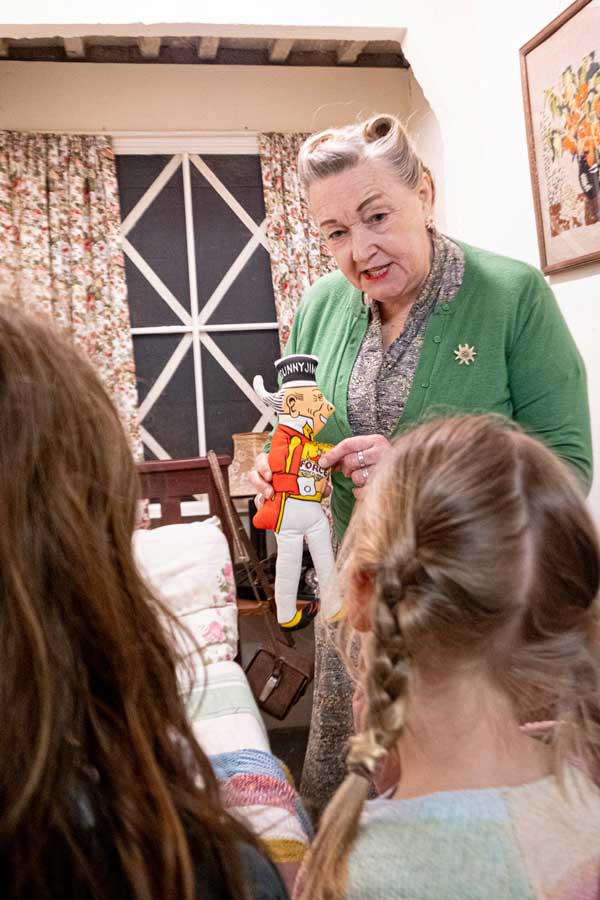With the 80th anniversary of VE day now upon us, and VJ Day’s fast approaching, archives from all across the UK have been preparing to draw out fascinating stories about the Second World War generation from their collections.
Archives are perfectly placed to bring communities together for such days of international significance, sharing stories with people online and through in-person events and activities.
This year, The National Archives spotted an opportunity to support archives in commemorating VE and VJ Day through its Engagement Grants programme. For the most recent round of applications, themed around ‘community’, we encouraged archives to propose projects that either reached out to new audiences or connected with existing audiences in new ways. Given the ‘community’ theme, we highlighted the 80th anniversaries of VE and VJ Day as a potential area of focus.

We were delighted to award Engagement Grants to twelve heritage organisations this year, including three to projects with strong links to the commemoration of VE and VJ Day. Here is just a taster of how Flintham Museum, Gressenhall Farm and Workhouse, and the charity Take Shelter are using their Engagement Grants to mark these anniversaries.
Seasonal foods in difficult times
The Flintham Museum in Nottinghamshire looks at rural life through the eyes of a village shopkeeper. Its life began in 1990 when the unsold contents of the old village shop at Flintham (which closed in 1982) were discovered in an outbuilding behind the shop, offering an insight into local shopping before supermarkets were quite so prevalent.
Although few edible items were found, there were stacks of documents relating to food through the 20th century, including hundreds of items about food rationing from 1940 to 1954. Using these documents as a starting point, the project team are organising activities for all ages relating to food in Flintham during three difficult time periods.
Copies of ration books from the 1940s will be distributed to 250 households. These residents will then have the chance to learn what foods were available during, and just after, the Second World War and will be invited to devise their own recipes using these ingredients.

The project then turns to the first COVID lockdown in 2020, when Flintham’s volunteer-run community shop was able to sustain itself by working with local suppliers and concentrating on seasonal foods. Memories of shopping and eating during COVID will be captured for future generations to discover.
The third part will encourage people to think about what they would eat in the event of a future conflict if food import and distribution networks were to be disrupted. Four local walks with a professional forager will take place in 2025 to find unexpected foods in and around the village. Some of the discoveries will even be turned into edible items for people to take home and eat.
The project will wrap up with a community picnic where locally made food, reflecting all three time periods, will be prepared and shared.
A wealth of local stories in Norfolk
Coinciding with the anniversaries of VE and VJ Day, Gressenhall Farm and Workhouse will explore the little-known history of their rural site, focusing particularly on the lives of local people in 1945 and the social changes for Norfolk during this period.
Norfolk is acclaimed for its international role in the Second World War. Royal Norfolk Regiment’s 2nd Battalion was the first complete infantry unit of the British Expeditionary Force to land in France at the start of the war and the first soldiers ashore the Normandy beaches on D-Day were men from the Royal Norfolk Regiment. However, little is known about the finer details of life for those living in Norfolk during the war.
The region experienced a changed landscape of agricultural labour spearheaded by the Women’s Land Army. There was a strong current of international cultural exchange, with US Forces positioned at multiple bases. This was also a period when the Mitford and Launditch Union Workhouse became a Public Assistance Institution, ahead of its eventual transformation into an NHS care home for elderly and disabled people in 1948.

Equipped with training from the Norfolk Record Office, staff and volunteers will undertake in-depth research to develop two public engagement events. They will also create a robust research pack, including several biographical profiles, which can be used in the museum’s Learning and Events programme, and by students and educational institutions.
The profiles will be brought to life for visitors through costumed interpretations. By using interactive and immersive storytelling, the museum hopes to make the history more engaging for families and younger audiences, inviting them to connect with history through a more human lens.
Bringing together wartime voices
Take Shelter is a small charity that runs one of only two wartime school air raid shelters that are open to the public in the UK. They are working with West Sussex Record Office, the Royal Sussex Regimental Museum and the Mass Observation Archive.

The project will focus on two key perspectives: firstly, the military experience of soldiers from the Royal Sussex Regiment who, across their ten battalions, had men serving in Europe on VE Day, in India on VJ Day and in the UK on Home Defence duties.
The second focus will be on individuals, families and communities and their everyday experience as captured by Mass Observation in 1945 and beyond. Their archive is known for its extensive collection of Second World War diaries and documents but also contains records from 1981 onwards following the renewal of the Mass Observation initiative.
By drawing on their partners’ different collections, the project team will produce an online pack for primary school students, including copies of materials from the archives and curriculum-linked activities. They will also create a touchscreen resource for schools and community visitors alike to use. Finally, the team will create a touring exhibition of four pop-up banners, which will be loaned to schools, communities and project partners.
Michael Button, Chair of Take Shelter, captured the necessity of engagement projects like these by saying: ‘we are very aware that those who lived through the war will soon no longer be with us. We are looking forward to bringing together the wartime voices from the archives so we can share them with our visitors and encourage them to reflect on what celebration and commemoration meant at the end of the Second World War and what it means to them today.’